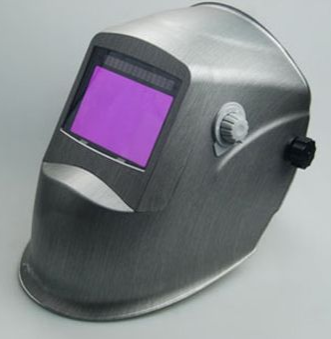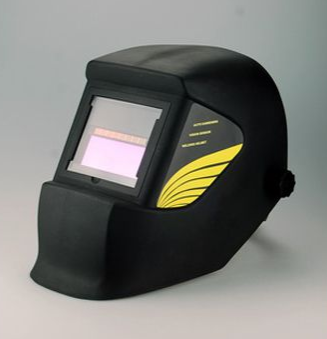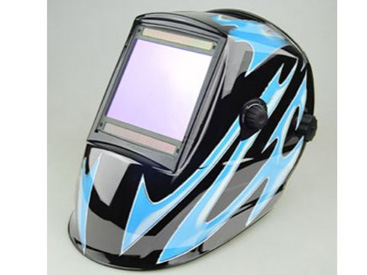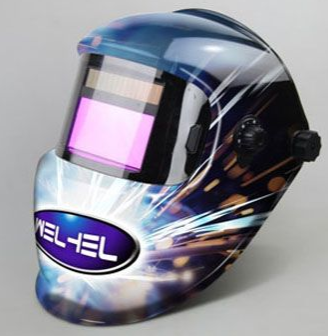A welding helmet is arguably the most complete piece of protective equipment a welder must use. In addition to physically protecting your face from sparks, welding helmets also protect your eyesight from the dangerous infrared and ultraviolet rays emitted during welding.
When selecting the correct welding helmet for your needs, it’s essential to secure the right one for your needs and budget. However, when choosing, you will find that there are two main types to choose from. These are automatic light changing helmets and passive welding helmets.
This guide will break down these two types to help you determine the right one for you.

Auto Darkening Welding Helmet
1. Auto-darkening helmets
Auto-darkening welding helmets are equipped with an auto-darkening filter lens. The helmet will also be equipped with multiple light sensors, also known as arc-light sensors, to identify the filters that need to be used.
These sensors are conveniently mounted on the side ridges of the helmet and actively detect the light emitted by the welding arc. A quality welding helmet will have approximately 3 to 6 arc sensors. When you are out of position and the sensors may be blocked, you can get better coverage when you have more sensors.
The helmet will trigger the lens to darken, using a set of tints from 8 to 13. In addition, your view is not obstructed when the helmet is facing down, as it is designed to allow you to see your welding process clearly through the lighted lens. The auto-darkening welding helmet is an ideal choice because it reduces the need to manually change filters, allowing you to work continuously until the job is complete.

Auto Darkening Welding Helmet
Additional features of the auto-darkening helmet
Function Control
In addition to the lenses, these helmets allow the user to configure sensitivity settings and other configurations to best suit their comfort needs. Some even add measures to keep you cool and protected from the heat while welding.
Comfortable and lightweight
Despite their appearance, these helmets fit perfectly and wrap comfortably around your head. Loose and heavy helmets can be stressful during the welding process, which is why auto-chromatic helmets come in a variety of sizes to fully match your structure. The gear has a soft liner that provides cushioned support for your cheekbones, neck, and spine.
Automatic UV or IR dimming filters
The mechanism on the back of these helmets is designed to protect against bright arc light. These polarizing filters automatically dim according to the penetration of the emitted ultraviolet and infrared light; ultimately, providing optimal eye protection.

Welding Helmet
Cost of lens replacement
Depending on the brand and specifications of the product, premium replacement lenses for auto-darkening helmets can cost between $85 and several hundred dollars.
Benefits of auto-darkening helmet
Fully shields the face from harmful rays
Provides excellent weld protection
Features an electronic lens filter system that automatically dims to match the spectrum emitted over the arc
Filter selection ranges from 8 to 13
The advanced LCD screen allows manual adjustment of sensitivity and shade level configuration
2. Passive welding helmets
Passive welding helmets are held in place with a built-in blackout lens, usually a 10-gauge visor. However, helmet manufacturers may change the lens number depending on the brand.
They are the most common type of welding helmet on the market. The lenses are made of standard glass and are coated to protect the user from infrared and ultraviolet radiation. When welding, the helmet needs to be pushed lightly to reposition the torch and analyze its work during each weld.

Auto Darkening Welding Helmet
Cost of lens replacement
Since helmets are affordable, fixed replacement lenses can cost between $10 and $60.
Advantages of Passive welding helmets
The passive helmet is much less expensive than auto-darkening lenses
Adequate face and head weld protection
Adequate and optically more accurate viewing
Easily replaceable and reasonably priced lenses or replacement parts
Does not run on batteries and does not have any technical controls
Glass lenses are coated with infrared and UV protection
In summary
Whether you choose an auto-lighting or passive welding helmet, you'll need to consider the pros and cons of each to ensure you choose the option that best suits your welding needs.











